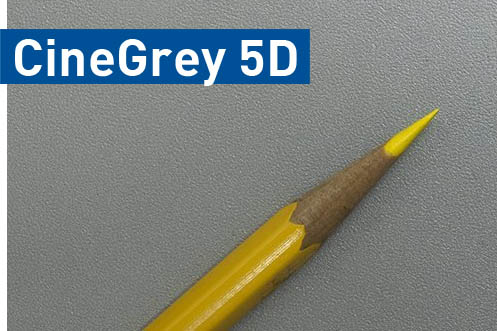ProjectorScreen.com: We are working on the next piece about ambient light rejecting surfaces. You've got both the CineGrey 5D as well as the Starbright 4 currently. Both are higher gain screens while still offering ambient light rejecting while most other ALR surfaces have gain in the .8 - 1.3 range.
Many people go the "poor mans" route of ALR by getting a lower gain screen and a brighter projector. The rationale being that the lower gain screen will dull all light, both ambient and from the projector and a boost in brightness from the projector will compensate for the diminished gain, while also getting enhanced black levels and contrast.
Your surfaces seem to be able to allow the user to NOT have to get a brighter (more expensive) projector and get better ALR performance then going with a grey screen at a lower price point than many of the other ALR surfaces out there.
Elite Screens: Until now, the only lower gain screen that can be obtained on a poor-man's budget would have been a matte grey. Contrary to the long perpetuated myth, Matte grey does nothing in regards to ALR. It's darker format helps contrast provided you are using a high output projector but anything it does (real or imagined) to counter the effects of ambient light is strictly due to its dull reflective capabilities.
The true ALR "grey" screens started with designs like Stewart's successful Firehawk series and continues today with various designs from companies like Elite (
CineGrey 5D, Starbright 4, DarkStar, etc.), SI (Black Diamond) and DNP (Supernova) products. To date, these still represent a medium to high level spending budget.
 What is so unprecedented about Elite's new CineGrey material is that they are driving the price point of a true ALR to within the reach of AV consumers with a modest spending limit.
What each of these have in common is essentially the use of a highly reflective (often micro-textured) sub-surface that will be either retro or angular reflective.
What is so unprecedented about Elite's new CineGrey material is that they are driving the price point of a true ALR to within the reach of AV consumers with a modest spending limit.
What each of these have in common is essentially the use of a highly reflective (often micro-textured) sub-surface that will be either retro or angular reflective.
This is what really amplifies the brightness while simultaneously compressing the optimal viewing angle into a more narrow cone. The surface that lies over the reflective layer is what gives the screen its grey and sometimes almost black appearance. From this point, the gain is determined by the thickness of the contrast layer.
This is the reason, some ALR screens tout a 0.8 or 0.9 gain while others boast a +1. Gain brightness.
The best way to describe the diversity is that each is made for a specific purpose. The claimed 4 gain brightness of the Starbright 4 indicates that it is more suitable for commercial applications as its brightness would be overpowering in a dark room with a medium to high projector output.
The higher gain is also more typical to the angular-reflective materials. This makes sense since (<1gain) retro-reflective properties of the other ALR screens almost exclusively serve the needs of home theater while providing limited possibilities for commercial applications.
The ALR screens that claim a gain that is lower than 1.0 are often attributed to home theater where its retro-reflective qualities are ideal for the seating arrangements where a combination of its contrast layers and micro-reflective structures absorb ambient light so effectively that it will give a "TV-bright" performance even with all the lights on and blinds open.
The CineGrey 5D is angular reflective because that type of ALR technology is much cheaper to produce. It also has a more versatile application while the retro-reflective materials are almost exclusively suited to one thing, home theater.